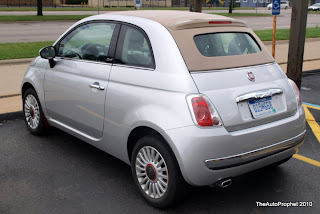Did you know that the NHTSA, together with 13 automakers, is working on a device which will test your breath alcohol concentration, to be installed (they hope) in all vehicles? Did you know that they are spending $2,000,000 per year (some of which is taxpayer money) on this project? Now Senator Udall from New Mexico is proposing to increase funding to $12,000,000/year.
To its credit, the DADSS project acknowledges that in order to be accepted by the public, the system they come up with must be practical and non-intrusive. They are pursuing several methods of doing a passive test, to avoid having to have the driver blow into a tube and wait several minutes before allowing the car to start.
They are looking at both contacting and non-contacting methods. One method is to have an IR spectrograph system which reads the blood alcohol level by analyzing the reflected light from a persons skin, which would have to be touching a sensor hidden somewhere such as the steering wheel or shift knob. Another method would be to analyze the vapor in the cabin using several "sniffers".
However, even a passive system has some significant issues that will need to be overcome before the average person will agree to have one in their vehicle. The chance of a false positive must be vanishingly small. But at the same time, the system must be difficult to defeat, or it loses its protective effect.
And any system that degrades over time, to the point where it starts calling false positives, would not be acceptable.
Consider a contacting spectrograph sensor. What if it is winter, and our driver wants to wear gloves? Do you make him remove his gloves to start the car? Would people submit to that? (No).
Can the system tell the difference between a bag of saline solution and a persons finger? Could it be fooled with a hot dog?
Or what if you are using cabin air sensors, and you are sober but your friend in the passenger seat is drunk? The system must be able to tell the difference reliably to be acceptable.
Would an air analyzer system work with the windows down, or with the ventilation fans blowing? Any solution which requires people to start with closed windows or without ventilation won't be accepted.
Could a cabin air analyzer be fooled by taping over the sensor inlet ports?
To be effective and safe, the system would have to make an up or down call quickly while the car is parked. Which means it will almost certainly have to be a default-to-guilty (restrictive) system as opposed to a non-restrictive default-to-innocent system. If the system allows you to drive away, but then makes a "intoxicated" call later, and stops your car, it may leave you in an unsafe situation.
I am skeptical about the idea that every car should have an alcohol detector on board. I think many lives could be saved if, instead, the system were required as an after-market installation for anyone who is caught DUI. I am not ready to accept, and I don't think most people would accept a system which presumes that you are drunk unless you can prove otherwise.



